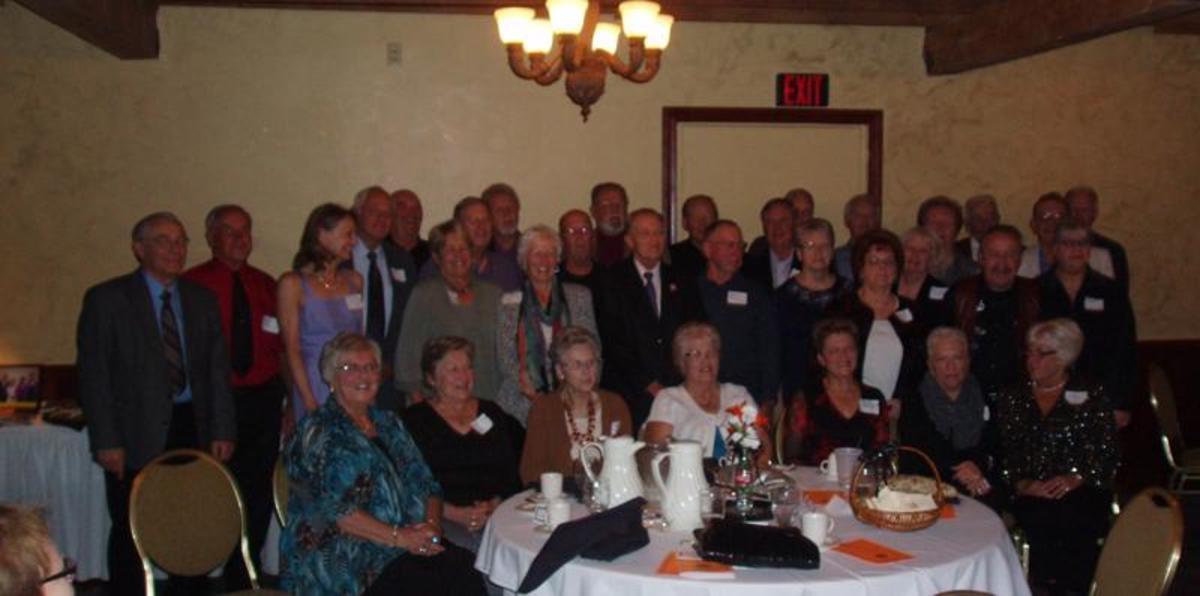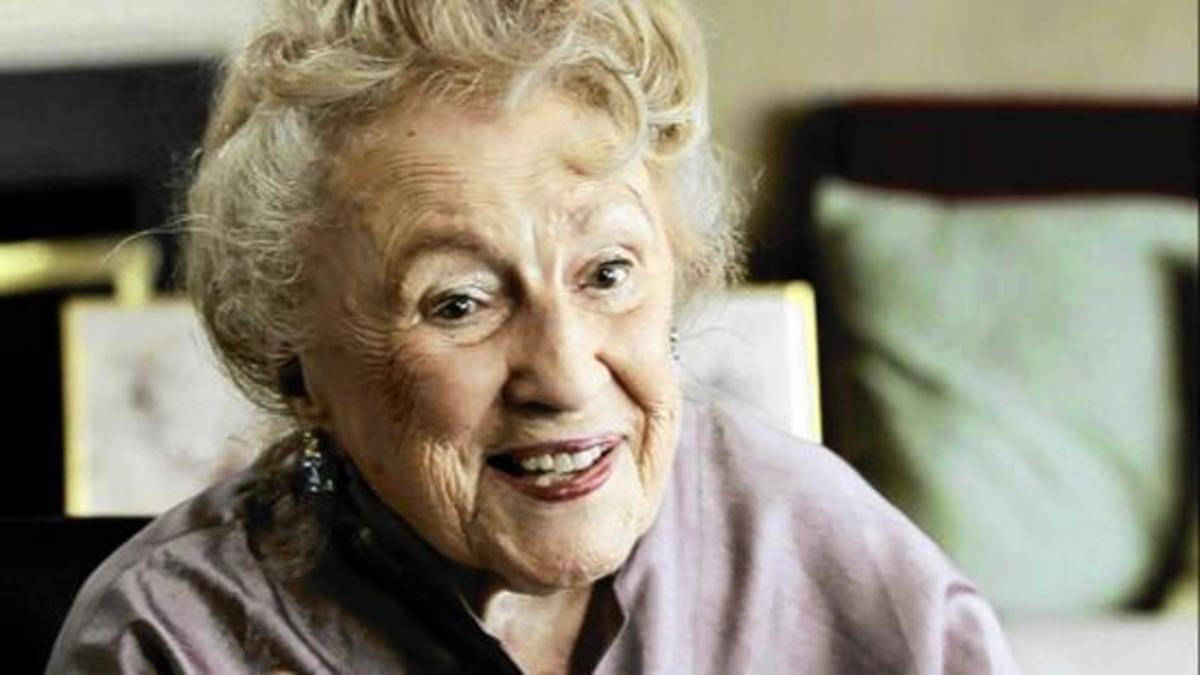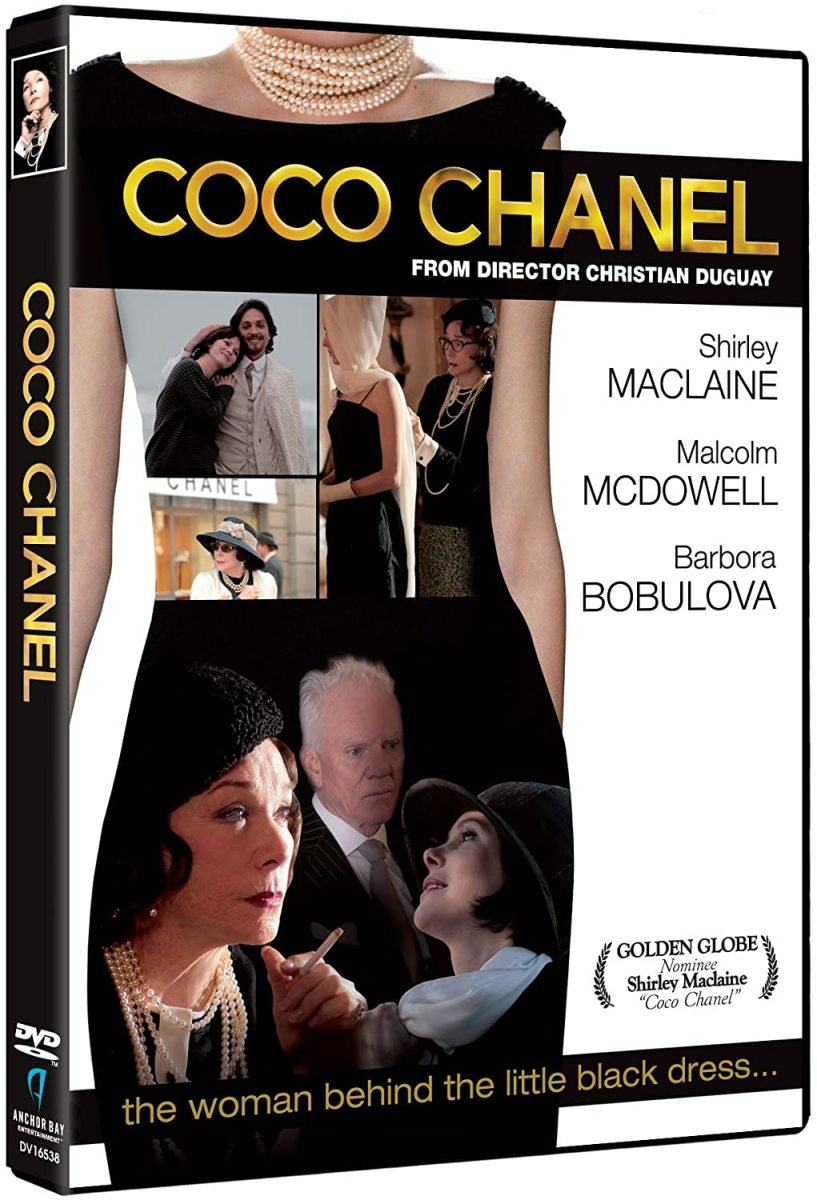Coming-of-Age Films Through the Decades
Coming-of-age is an often-used tool in films to tell the story of a young adult and the events surrounding their transition into maturity. There is a particular subset of films that specifically target a certain time period as the backdrop to their story. Audiences undergo a personal nostalgia trip by being reminded of that time period which adds a special appeal to the story. The following is a discussion of six films that span three decades that tell the tales of a protagonist undergoing a psychological and moral growth with themes of sexual identity and personal philosophy. Not coincidentally, they are often set in the summer. I chose these films because they take place at least more than a decade before the time the movie was released. They are entertaining and successful in capturing a by-gone era for contemporary audiences. In addition, music in the film will be discussed as it proves to be an integral part in establishing the tone of the time period.
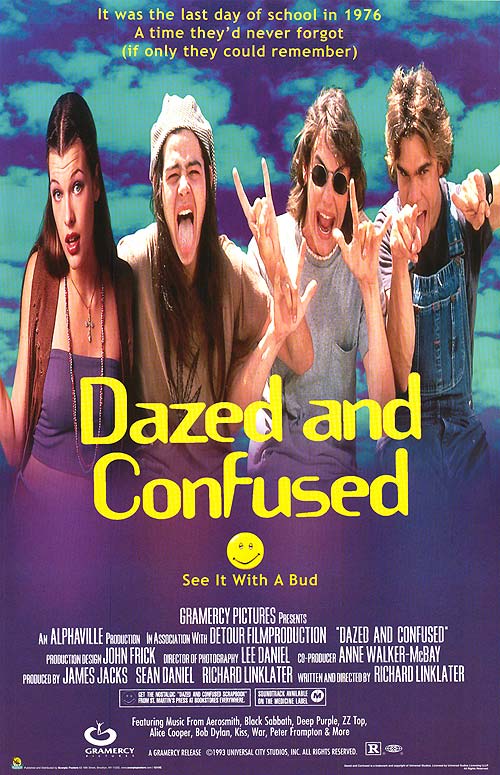
1970s
In the 1993 film “Dazed and Confused,” writer-director Richard Linklater produced a love letter to his youth in the mid-1970s. Set against the backdrop of the last day of school in 1976, the ensemble film focused on two groups of high school students: incoming freshman and transitioning seniors. The film features a number of actors who have since become well known like Ben Affleck, Matthew McConaughey, Jason London, Milla Jovavich, Parker Posey, and Adam Goldberg.
The film is a day-in-the-life of social cliques, teenage camaraderie, recreational drugs, defying authority, and of course, the music. The soundtrack is a greatest hits of that decade. Alice Cooper’s “School’s Out” signals the end of the school year, students cruise the streets to War’s “Low Rider” and Foghat’s “Slow Ride.” Young lovers make out to Lynyrd Skynyrd’s “Tuesday’s Gone.” Linklater, a native of Austin, Texas, loosely bases the story and its characters about his summer of ’76.
While the story is a footprint in time for not only for these characters but also of a generation, it’s a single day that represents a turning point in adolescence. For the incoming freshman, they have to endure a round of ritualistic hazing by the seniors in order to be accepted within the social environment of the high school halls. Mitch Kramer (Wiley Wiggins) is the primary freshman character who unfortunately gets the brunt of the paddling by the senior jocks, thanks in part for his older sister asking the boys to take it easy on her little brother. After Mitch takes his licks, the jocks ultimately accept him into their group and invite him out for the rest of the night. Senior football players Randall “Pink” Floyd (London), Don Dawson (Sasha Jenson), Benny O’Donnell (Cole Hauser), and Melvin Spivey (Jason O. Smith) are anxious to claim their position as kings of the school. However, Floyd is wary of coming back to play and begins defying authority figures, in particular his head coach who forces his players to sign a pledge not to engage in mischief. Floyd wants to play but on his own terms. Mitch, on the other hand, gets drunk for the first time, makes out with an older girl, and partakes in some of the lawlessness with the seniors. Mitch experiences a personal transition as a teenager by being accepted by the older students, boosting his confidence and his excitement for his first year in high school.
“Dazed and Confused” remains a cult favorite, thanks in part to the young actors’ genuine connection with one another, the classic rock soundtrack, and its ability to relate to most teenagers no matter what decade it is. The times may change but the high school social structure remains the same. Even if you are not accepted by other groups of people, you can still count on your friends to get you through your young life.
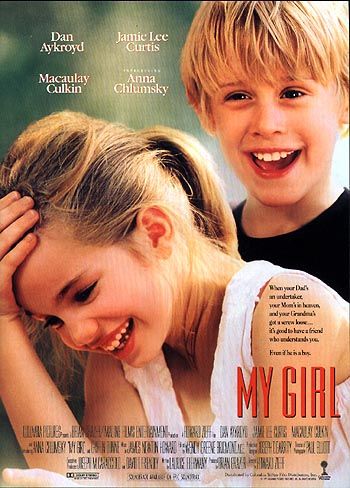
The second coming-of-age film deals with a younger protagonist. Vada Sultenfuss, the precocious 11 year-old tomboy living with her widowed father in a funeral parlor, experiences her own personal growth in the 1991 film “My Girl.” Set in the summer of 1972 in Madison, Pennsylvania, Vada (Anna Chlumsky) feels out of place in the world. Surrounded by death and raised by a single father (Dan Ackroyd), Vada is a hypochondriac with only one friend named Thomas J. (Macaulay Culkin). Her father Harry has a difficult time raising a daughter on his own while being wrapped up in his job as a funeral director.
In the beginning, Vada spends her summer days riding bikes around town with Thomas J., enrolls in an adult writing course as an excuse to be with Mr. Bixler (Griffin Dunne), whom she is infatuated with, and taking care of her grandmother who is stricken with Alzheimer’s disease. When her father hires make-up artist Shelly DeVoto (Jamie Lee Curtis) to work on the recently deceased, Vada finally has a woman she can talk to and begins to see her as a role model. However, when Shelly and Vada’s father begin a romantic relationship, she resents the two. Over the course of the summer, she becomes closer with Thomas J. and they share their first kiss. Unfortunately, Thomas J. meets an untimely death due to a fatal allergy to bee stings in the woods trying to find Vada’s lost mood ring. Vada experiences a difficult time in dealing with her pain and grief. She blamed herself for her mother’s death from childbirth and now blames herself for Thomas J.’s death. Despite growing up in a home with deceased bodies, she cannot come to grips with her best friend who died at such a young age. It isn’t until her father comforts her and explains that death is nobody’s fault and it can occur without explanation.
Over the course of that summer, Vada experiences whirlwind life lessons in love, friendship, and the tragedies that can occur in life. Quite a handful for an 11 year-old. Music also plays an important part in the film as well, highlighting songs of the time period. The soundtrack features many classic pop hits of the 1960s and early 1970s including “Saturday in the Park” by Chicago, “Bad Moon Rising” by Creedence Clearwater Revival, and of course the title track by The Temptations. The two lead child actors’ performances are integral to the sentimentality of the portrayal of adolescents in that time period. The film remains a tearjerker but nonetheless captures the special moments of youth in the early 1970s.
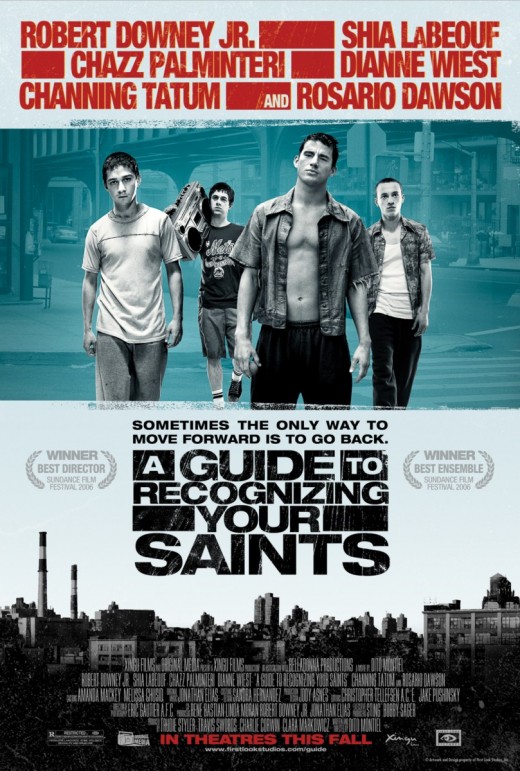
1980s
Moving forward to the 1980s is a film that chronicles the life of writer and musician Dito Montiel and his experiences on the mean streets of Astoria, Queens in the 2006 autobiographical film “A Guide to Recognizing Your Saints.” In the summer of 1986, Dito (Shia LaBeouf), his best friend Antonio (Channing Tatum), Antonio’s brother Giuseppe (Adam Scarimbolo) and their friend Nerf (Peter Tambakis) roam the streets and subways, causing mischief and picking fights with other gangs. Dito develops a crush with Laurie (Melanie Diaz) and strikes up a new friendship with Mike O’Shea (Martin Compston), a Scottish boy who dreams of becoming a musician. Dito lives with his mother and father (Dianne Wiest and Chazz Palminteri) but dreams of breaking out from his isolated environment. Mike convinces Dito to go out west to California. His father objects, insisting that everything he needs are right there in New York City. Dito, Antonio and Nerf get caught up in a rivalry with a Puerto Rican gang and soon violence escalates and turns Dito’s world inside out.
Over the course of the film, the 1980s and present day are interspersed. The film opens up in present day with an adult Dito (Robert Downey Jr.), now a successful writer based in Los Angeles, who performs a reading of his new book that takes a look back of that particular summer. Now estranged from his friends and family, Dito returns home after his mother informs him his father has fallen ill. Dito flies back east and reconnects with his friends. Nerf (Scott Campbell) still lives with his mother, Laurie (Rosario Dawson) is now a single mom, and Antonio (Eric Roberts) is behind bars. Over the course of the film, the audience learns that Dito abandoned his home in the wake of tragic events in order to make a new life for himself in California and has a difficult time making amends with everyone, especially his father.
In the summer of 1986, Dito attempts to rebel against his parents with his dreams of moving to the other side of the country with his friend Mike. He doesn’t want to be tied down to his home in Astoria and wants to get away from the violence he experiences with his friends on the streets. When he returns home 20 years later, his problems remains the same and must work to redeem his past.
Like Linklater, Montiel uses his own life experiences to tell a story. Most of his friends on screen are a composite character of several real life people from Montiel’s past. As a first time filmmaker, Montiel portrays the humid New York summer streets with gritty detail. Montiel interjects music to paint the urban environment of the time with songs by Lou Reed, Odyssey, and Gerry Rafferty. There are plenty of coming-of-age films that depict life in New York City, but “A Guide to Recognizing Your Saints” is a great example of a real life storyteller using his experiences of a troubled youth and how it has shaped him as an adult.
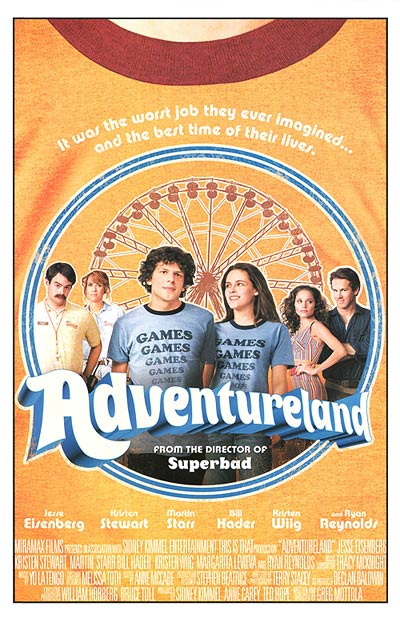
The second film that was a snapshot of the 1980s is the 2009 film “Adventureland.” In the summer of 1987, James Brennan (Jesse Eisenberg) was undergoing a crisis that many young college graduates of any year go through… having a college degree and still no idea what they want to do in life. Brennan is an Oberlin College grad with a degree in comparative literature, not exactly a practical education. While James has dreams of going to graduate school, his parents inform him they are unable to support him financially. In the search of a summer job, his lack of training and skills can only afford him a minimum wage job at the local amusement park in Pittsburgh, Pennsylvania.
Hired by husband and wife park managers Bobby and Paulette (Bill Hader and Kristin Wiig), James works the games booths alongside Joel (Martin Starr), a sarcastic, pipe-smoking intellectual who often receives most of the teasing by his co-workers. James also meets Mike Connell, the park’s technician and part-time musician and Emily “Em” Lewin (Kristen Stewart), who becomes James’s love interest. The film chronicles James’s droll summer months, each shift as boring as the last one while swallowing his pride for working such a menial job for a college grad.
However, his time at the park becomes more tolerable as he strikes up friendship with his co-workers and gets closer with Em. However, when James learns that Em had been having a secret affair with Mike, who happens to be married, his heart is broken. With dreams of becoming a journalist and attend Columbia University graduate school, James must decide if he wants to stay in Pittsburgh or head out to New York City.
For a character like James, his life was uncertain at the time of his college graduation. He had no solid job prospects and was forced to accept a job that even a high school dropout could be hired for. He had high aspirations but had to settle for the minimum. It isn’t until the end of summer that he learns which of his friends he trusts and which he cannot. He personally grows to accept and appreciate what he has in life and not dwell on what he doesn’t have. This motivates him to move to New York City with the little money he has while pursuing Em, who quit her job at the park once the entire staff knew of her affair and moved back to New York.
While set and filmed in and around Pittsburgh, the basis of the film comes from director Greg Mottola who worked at the Adventureland amusement park in Farmingdale, New York in the 80s. Like the films discussed previously, music plays a supporting part in the movie. James in particular idolizes Lou Reed and the Velvet Underground. However, throughout the film is a mix of 80s era pop hits (such as “Rock Me Amadeus” by Falco and “Here I Go Again” by Whitesnake) and college rock staples from Husker Du, The Replacements, and Jesus and Mary Chain. It’s an interesting blend that is a personal reflection of Mottola’s youth.
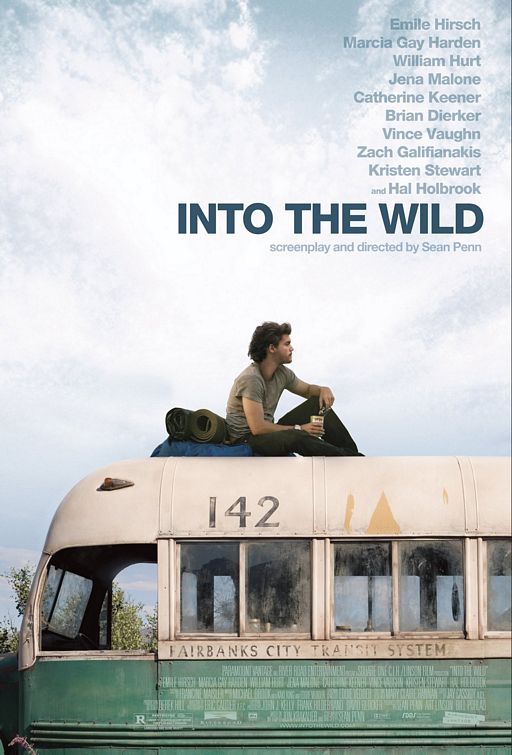
1990s
Moving into the 1990s, the next film is the only one that doesn’t take place within a single year, but rather the two-year adventure a college graduate embarked on but ended in tragedy. Based on the best-selling book of the same name by Jon Krakauer, “Into the Wild” chronicles the true-life travels of Christopher McCandless across North America. Released in 2006, the film was directed by Sean Penn and starred Emile Hirsch as McCandless, the thrill-seeking adventurer who turned his back on society in order to find deeper meaning within nature.
In May of 1990, McCandless is a college graduate from Emory University but with no intentions of a conventional lifestyle despite pressure from his parents. He decides to break away from society by burning his personal identification documents and donating his life savings to charity. Without telling his family, McCandless heads west. After losing his car in a flash flood, McCandless hitchhikes and meets a handful of colorful characters that share in his sense of adventure. He meets up with a hippie couple named Jan Burres (Catherine Keener) and Rainey (Brian H. Dierker). In Carthage, South Dakota, McCandless gets a job at a contract harvesting company owned by Wayne Westerberg (Vince Vaughn) but is forced to leave when Wayne is busted by the F.B.I. for satellite piracy. He travels down the Colorado River by kayak despite not having a permit and makes his way down to Mexico. After losing his kayak in a dust storm, McCandless crosses back over the border into California on his way to his destination: the Alaskan wilderness.
While regarded as a folk hero by some, many critics of McCandless are quick to point out his stubborn attitude towards society, his unwillingness to properly train before embarking in a risky feat, and the fact that he selfishly abandoned his family in order seek out his own sense of adventure. The film and the book does not cover that up but concludes with his realization that he does not want to be completely removed from society and attempts to be back with the ones he loves. As he writes in his journal by the end of the film, “happiness only real when shared.”
For a film set in the early 1990s, only a few songs are used to establish the time period, including MC Hammer’s hit “U Can’t Touch This.” But the real special treat is Pearl Jam front man Eddie Vedder’s terrific folk-oriented soundtrack written specifically for the film. Vedder remains an icon of the early 90s grunge era but his newer songs like “Society” and “Rise” provide a more intimate accompaniment throughout the film.
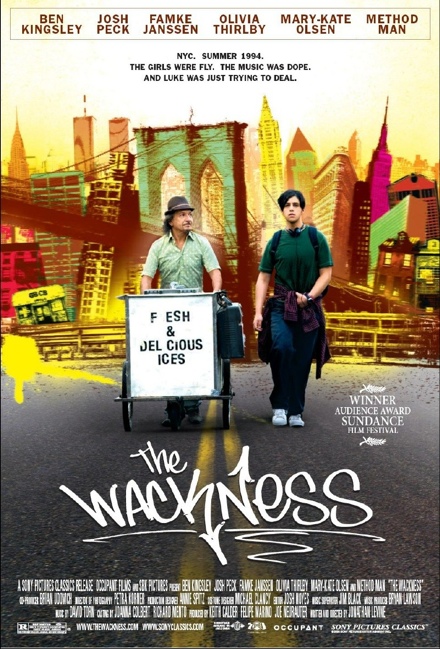
The last film is the 2008 independent film “The Wackness,” which chronicles the summer of 1994 in New York City. Luke Shapiro (Josh Peck) is a marijuana drug dealer who uses an Italian ice cart as a cover for his transactions. As he graduates from high school and college bound, he learns most of his friends will be out of the city for the summer. Luke befriends psychiatrist Dr. Jeffrey Squires (Ben Kingsley), who offers Luke therapy sessions in exchange for pot. Dr. Squires is undergoing a mid-life crisis as his marriage is falling apart and begins to engage in risky behavior. His stepdaughter Stephanie (Olivia Thirlby) is also a classmate of Luke’s and the only person left in the city to hang out with. He takes her along on his sales route and he begins having strong feelings for her.
Luke learns that his parents are broke and could soon be evicted from their apartment. While they are unaware of his drug dealing, Luke offers the money he’s earned to save their home but they do not want to accept it. Later, Luke calls Stephanie to hang out but ends up talking with Dr. Squire. The two head out to a bar where the substance abuse escalates and the two end up vandalizing a building. Caught by the police and put in jail, Stephanie ends up bailing them out.
As Dr. Squire tries to save his marriage, Luke and Stephanie get closer and eventually have sex. During a moment of intimacy, Luke professes his love for her but she is immediately put off as she doesn’t want that type of relationship with him. Heartbroken, Luke visits Dr. Squires at his Fire Island home and witnesses him deep into a bender. Dr. Squire walks into the ocean with the intention of killing himself but Luke swims in to save him. While at this time the two men are in a period of personal loss, they are able to make light of their situation and decide to move on. After Luke’s parents are evicted, he moves to New Jersey to live with his grandparents. Thanks to the time spent with Dr. Squire, he expresses interest in psychiatry as a possible career.
As stated previously, the film spans an important summer for the protagonist during a life-changing time period. For Luke, the story begins in his comfortable surroundings, dealing drugs, making a profit, and fantasizing about being a hip-hop star. By the end, he accepts the troubles in his life and begins to focus on his new career goal in psychiatry. He experienced love and heartbreak and made an unusual friend in Dr. Squire.
Since the film is set in 1994, the soundtrack is filled with classic 90s rap and hip-hop that paints the urban setting. Luke’s favorite group is A Tribe Called Quest and in one scene, hears for the first time The Notorious B.I.G., who at that time was a New York underground sensation right before he hit it big. Other notable New York City rappers like Nas, Raekwon, and the Wu-Tang Clan make appearances on the film’s soundtrack.
In the comments section, feel free to discuss your favorite coming-of-age films. Are there any films that hold a special place in your heart because of the specific time period it takes place?

